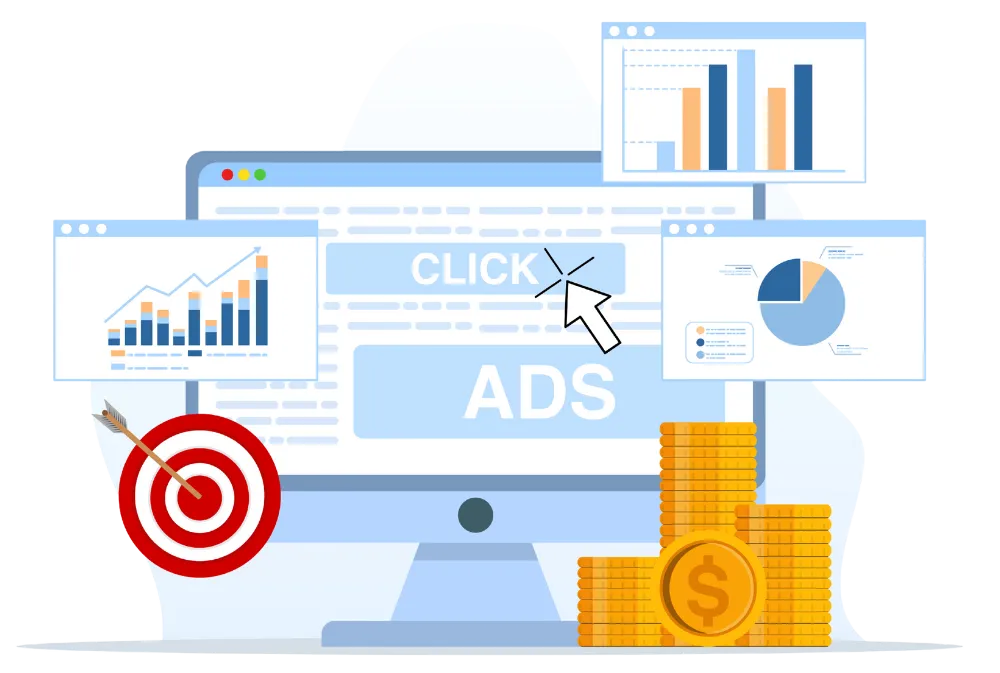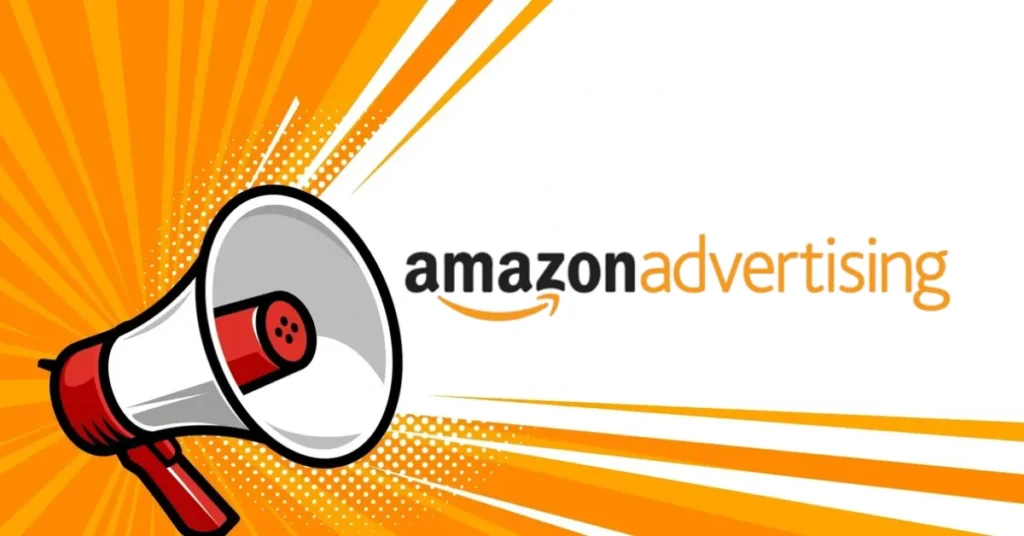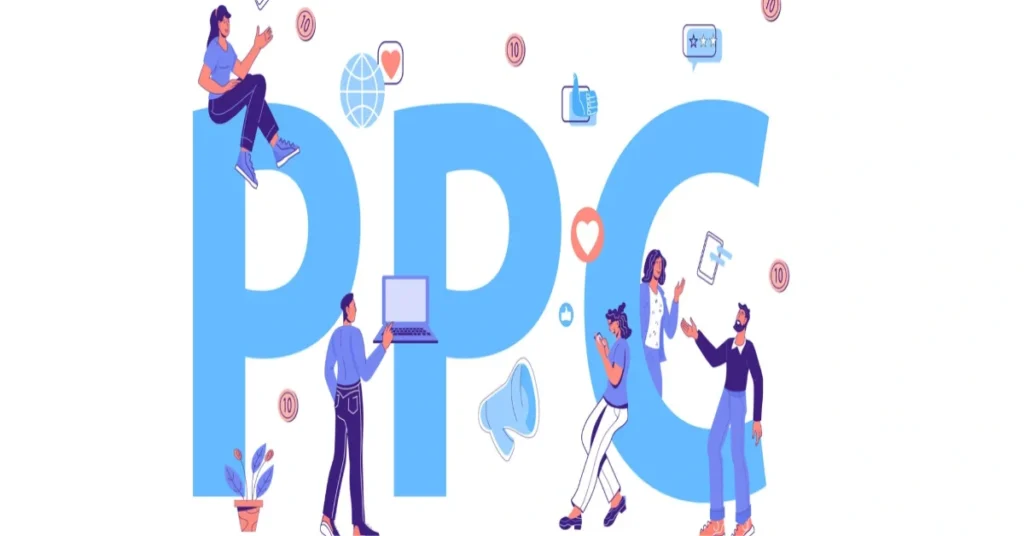What is paid advertising, and how does it work?

I often wonder about the most effective ways for businesses to connect with potential customers in the United States. One powerful method involves paid adverts.
These are the sponsored listings and advertisements you see online. They appear on search engines like Google and Bing, social media platforms such as Facebook and Instagram, and even on e-commerce sites like Amazon.
Beyond search engines, social media platforms like Instagram offer powerful advertising opportunities in the US.
If you’re specifically curious about the investment involved, my in-depth guide, “Instagram Ads Cost: The Ultimate US Guide to Pricing and ROI,” breaks down the various factors influencing what you’ll pay and the potential returns you can expect.
Understanding how these paid adverts work is essential for any business aiming to grow its presence in the US market.
Understanding Paid Advertising Basics

Paid adverts operate on a simple principle: businesses pay to display their messages to specific audiences. This payment model often works on a per-click (PPC) basis.
This means you only pay when someone clicks on your ad. Think of it as a direct way to gain visibility. Paid search results appear alongside organic (unpaid) results.
These paid spots are usually marked clearly as “Sponsored” or “Ad.” This distinction helps users understand which listings are paid placements.
Why should a business in the US consider paid adverts? The reasons are compelling. First, you gain the ability to reach a massive and targeted audience right here in the United States.
Platforms like Google and Facebook have incredibly detailed information about their users. This allows you to show your ads to people based on their demographics, interests, and online behavior. Second, paid adverts deliver results quickly.
Unlike organic search, where it can take time to rank high, paid campaigns can drive traffic almost instantly. Third, you have precise control over your targeting.
You can specify the exact location (down to zip codes), age groups, and interests of the people who see your ads. Finally, the results are measurable.
You can track clicks, impressions (how many times your ad is shown), and conversions (desired actions like purchases or sign-ups). This data helps you refine your campaigns for better performance.
Understanding the costs involved is a crucial first step when considering paid advertising. For those in the US curious about entry-level budgets, my article, “Is $10 a day Budget enough for Google Ads?” provides a detailed analysis to help you get started with Google’s platform.
Exploring Key Advertising Platforms

According to a Statista report published on May 20, 2025, the digital advertising market reached approximately $732.75 billion, with forecasts predicting growth to over $1 trillion by 2029.
Mobile advertising dominates the landscape, making up around 64% of all digital ad spend, driven by increased smartphone usage and mobile-first platforms.
Video advertising is one of the fastest-growing segments, expected to surpass $240 billion by 2028, with over 90% of marketers citing a positive ROI.
Social media platforms, especially TikTok, Facebook, and Instagram, account for a significant portion of ad revenue, with social ad spend projected to reach $310 billion in 2025.
Programmatic advertising represents the majority of display ad transactions, leveraging AI and real-time bidding to enhance targeting and efficiency.
Meanwhile, search advertising—dominated by Google—remains a highly effective channel, with a reported 200% average ROI.
Regionally, the United States leads in mobile ad spending, while India is seeing rapid growth, expecting its digital ad market to hit $7.1 billion by 2028. When we talk about paid adverts in the US, a few major platforms come to mind.
- Google Ads: This is often the first platform businesses consider. Google’s search engine has a dominant share of the US market. Google Ads offers various campaign types. Search campaigns display text ads on Google’s search results pages. Display campaigns show visual ads on a network of websites and apps. Shopping campaigns showcase product listings with images and prices. Video campaigns run on YouTube, the largest video platform in the US. App campaigns help promote mobile apps. Local Services Ads connect you with customers who search for your services on Google. Performance Max campaigns automate bidding and targeting across Google’s channels. Keyword research is vital here. It helps you understand what terms people in the US are searching for. Ad extensions are also crucial. These add extra information to your ads, like phone numbers or website links, improving visibility.
- Microsoft Advertising (Bing Ads): Sometimes overlooked, Bing still holds a significant portion of the US search market. Advertising on Bing can offer unique advantages. Competition might be lower in some industries, potentially leading to lower costs. Microsoft Advertising offers similar campaign types to Google Ads. Its integration with the Microsoft ecosystem (like Windows and Outlook) can also be beneficial for reaching certain user segments in the US.
- Social Media Advertising: Platforms like Facebook, Instagram, LinkedIn, and X (formerly Twitter) are powerful for reaching specific demographics and interests in the US. Each platform offers unique ad formats. Facebook and Instagram excel in visual ads and detailed audience targeting. LinkedIn is ideal for reaching professionals and businesses. X is strong for real-time updates and engaging in conversations. TikTok has gained immense popularity, especially with younger audiences in the US, offering short-form video ad opportunities. Successful social media campaigns in the US often involve visually appealing creatives and targeted messaging that resonates with specific user groups.
- Amazon Ads: For businesses selling products online in the US, Amazon Ads are essential. When people in the US are ready to buy, they often start their search on Amazon. Amazon offers different ad types. Sponsored Products ads promote individual product listings. Sponsored Brands ads showcase your brand and multiple products. Sponsored Display ads help you reach audiences on and off Amazon. Effective Amazon advertising focuses on keyword targeting within the Amazon marketplace and optimizing product listings for better visibility.
- Other Platforms: Beyond these giants, other platforms are gaining traction. Pinterest, with its visual discovery focus, is great for reaching users interested in hobbies and purchases. Snapchat appeals to a younger demographic with its unique ad formats. Exploring these platforms can open up niche audiences within the US market.
Creating Successful Ad Campaigns for the Audience
Launching paid adverts requires careful planning.
- Define Your Goals: What do you want to achieve with your ads in the US? Increased brand awareness? More leads? Higher sales? Clearly defined goals will guide your entire strategy. Identify your key performance indicators (KPIs). These are the metrics you will track to measure success.
- Understand Your Keywords: Keyword research is the foundation of search advertising. Use specialized tools to discover what terms people in the US are using when searching for your products or services. Consider the search intent behind those keywords. Are users looking to buy, learn, or find local information? Think about long-tail keywords. These are longer, more specific phrases that often indicate a higher purchase intent. Don’t forget negative keywords. These prevent your ads from showing for irrelevant searches.
- Target the Right People: The beauty of paid adverts lies in precise targeting. Utilize the demographic, interest, and behavioral targeting options available on each platform. If you’re a local business in the US, leverage location targeting to reach customers in your service area. Create custom audiences based on your existing customer data or website visitors. Lookalike audiences can help you reach new users with similar characteristics to your best customers.
- Write Compelling Ad Copy: Your ad copy is what convinces people to click. Craft clear and concise headlines and descriptions. Use language that resonates with your target audience in the US. Incorporate strong calls to action. Tell users exactly what you want them to do (e.g., “Shop Now,” “Learn More,” “Contact Us”). Experiment with different ad variations to see what performs best.
- Manage Your Budget: Determine a realistic budget for your campaigns. Understand the different bidding strategies available. Manual bidding gives you control over your bids. Automated bidding uses algorithms to optimize your bids for specific goals. Monitor your campaign costs and adjust your budget as needed to maximize your return on investment (ROI) in the US market.
- Use Ad Extensions: Ad extensions enhance your search ads with additional information. Sitelinks direct users to specific pages on your website. Callout extensions highlight key benefits. Structured snippets showcase product categories or services. Price extensions display your product prices. These extensions can significantly improve your ad’s click-through rate (CTR) in the US search results.
Taking Your Campaigns to the Next Level
Once your campaigns are running, continuous optimization is key.
- Re-engage Your Audience: Remarketing (or retargeting) allows you to show ads to people who have previously interacted with your website or ads. This is a powerful way to re-engage potential customers in the US and encourage conversions. Use different remarketing lists to target users based on their past behavior.
- Track Your Success: Set up conversion tracking to measure the actions that matter most to your business (e.g., sales, leads, sign-ups). Understand different attribution models to see how different touchpoints contribute to conversions. Google Analytics 4 (GA4) offers in-depth analytics to analyze your paid campaign performance in the US.
- Test and Learn: A/B testing involves experimenting with different versions of your ads, landing pages, or targeting to see what performs best with your US audience. Continuously test and refine your campaigns based on the data you collect.
- Embrace Automation: Explore the automation features offered by advertising platforms. Automated bidding strategies can save time and improve efficiency. AI-powered tools can help with tasks like ad creation and audience targeting.
Understanding US Advertising Regulations
When advertising in the US, it’s crucial to be aware of the legal and regulatory landscape. The Federal Trade Commission (FTC) has guidelines to ensure truthful and non-deceptive advertising.
The CAN-SPAM Act regulates commercial email. Privacy regulations like the California Consumer Privacy Act (CCPA) and the California Privacy Rights Act (CPRA) impact how you can collect and use user data for targeting.
Transparency is also increasingly important. Disclose sponsored content and ensure your advertising practices comply with all applicable US laws.
The Future of Paid Advertising

The world of paid adverts is constantly changing. Several trends are shaping its future in the US market.
Artificial intelligence (AI) and machine learning are playing a growing role in automation and optimization.
Voice search is becoming more popular, which might influence how people search and interact with ads. Video advertising, especially on platforms like YouTube and TikTok, continues to grow.
According to Pew Research data, the U.S. digital video advertising market reached $4.15 billion, accounting for approximately 9.7% of total digital ad revenue and 2.4% of all advertising revenue across platforms.
This represented a 43.5% year-over-year growth, with projections indicating that digital video advertising would comprise 15% of the digital ad market by 2017.
The average cost per thousand views (CPM) for digital video ads was estimated at $24.60, significantly higher than traditional display ads.
However, the market was dominated by major tech companies, with YouTube (Google) holding a substantial share.
News organizations faced challenges in capturing digital video ad revenue, as they competed with these dominant platforms and ad networks.
Mobile-first advertising is essential as more and more US users access the internet via their smartphones. Staying informed about these trends will help you adapt your strategies for continued success.
Conclusion: Mastering Paid Advertising
Paid adverts offer a powerful way to reach your target audience and achieve your business goals in the United States.
By understanding the fundamentals, exploring the different platforms, crafting effective campaigns, and staying informed about the evolving landscape and regulations, you can harness the full potential of paid advertising to grow your business in the US market.





